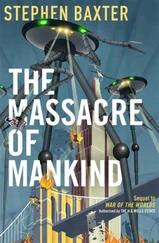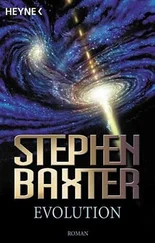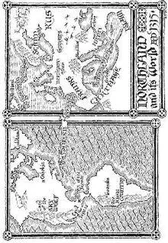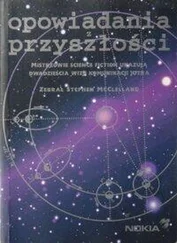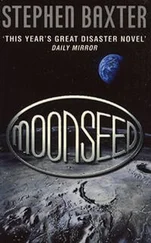It was a strange fact that for most of mankind the business of the Witnessing, and the wider program of Redemption Reath had hinted at, was the most visible manifestation of the nascent Transcendence’s ambitions. But, Alia thought now, how strange it was that the Transcendents, while reaching for the future, should be so obsessed with the past.
She tried to express this to Reath.
“Redemption is the will of the Transcendence,” he said peremptorily. “And so to understand the Transcendence you must understand the Redemption.”
“But what difference does it make? Michael Poole never knew I’ve been watching him all my life.”
“It certainly makes a difference to us, doesn’t it? The only alternative to knowing is not to know, to ignore all the suffering of the bloodstained generations that preceded us. Wouldn’t that diminish us?”
“I don’t know,” Alia said honestly.
“We have time to explore this later.” He stood up. “This has been a rich conversation. You’ve given me much to think about, Alia.”
“I have? But you’re the teacher.”
He smiled. “I keep telling you. The wisdom you need is within yourself, not in me. And I think you’re learning how to find that wisdom very well… Do you feel you are ready for the Second Implication?”
She took a deep breath. “Let’s do it.”
“Tomorrow, then, we will make a new landfall.”
After he left, idly she let the tank projection run forward.
There was Poole, clambering over that strange reef of broken machinery. Hot, dirty, he seemed troubled, agitated; he seemed to be trying to reach something, or someone.
And then he turned and looked up, out of the tank, directly into Alia’s eyes.
She gasped. She clapped her hands, and the Witnessing tank cleared. The image of Poole disappeared, that stern accusing stare evaporating in a blur of cubical pixels.
That was not supposed to happen.
I ordered a pod bus to take me back to the airport.
The pod, not much more than a dozen seats in a gleaming glass bubble and a hydrogen-fuel engine hidden in the floor, rolled silently up to my mother’s front door. There was one other passenger, apparently airport-bound like me. I clambered aboard with my suitcase. Embarrassingly my mother kissed me good-bye on the step. The pod sealed itself up and hissed away.
We worked our way out into the road system, the bus’s own local sentience tying into a system-wide intelligence mediated by a sky full of satellites and an invisible lacing of microwave signals. The traffic gradually built up, until we had in view, oh, at least twenty vehicles whirring away along the silvertop: pod buses like mine, cabs, delivery trucks, transport for disabled people, emergency vehicles like ambulances and fire trucks. My bus, as it swam into this stream, attached itself to more of its kind, nose to tail, until we were in a train of eight or ten pods, rolling easily along the road. I could see the heads of my fellow passengers in the bright blisters of the other pods. Every so often other pods would join us, or the train would crack open, releasing a pod to peel off down a slip road to perform some local pickup or dropoff.
We moved pretty fast on the open road, maybe a hundred kilometers an hour, and in the few busy stretches we could be tailgating the vehicle in front, just centimeters away. It was traffic moving at speeds and with such closeness that would once have scared me to death. But of course nobody was driving, no human being. We passengers in our glass bubbles were precious treasures cradled by metal and ceramic and electronic intelligence, washed along the road system in safety and silence — and with no more pollution than a puff of water vapor here and there, the residue of hydrogen burning in oxygen.
We kept to the silvertop stripe. Painted down the centerline of the old tarmac it was modern smart-concrete, embedded with miniature processors: self-diagnosing and self-repairing, it should need no maintenance for decades. But away from the silvertop whole lanes had been abandoned, and the old tarmac surface was crumbling, the defiant green of weeds pushing through the black, the first stage of nature’s recovery. There was a nostalgic tug when you looked out over those disintegrating acres of black stuff. I imagined the great unending streams of traffic, millions of tons of metal and glass and gasoline, that had once poured along these highways. And off the road you could see more haunting sights: abandoned gas stations and motels and shopping malls, all part of the vast infrastructure that had once sustained that river of traffic, and in turn fed off it.
How strange it is that all the cars have gone!
Of course it was economics, not environmental sensitivity, that killed the automobile.
There was a tipping point in the 2020s. For decades the national economy, and our political freedom to move, had been utterly constrained by our dependence on oil. And now the oil was running out: the engineers had to start fires in the wells to force out the last of the oil, or send down microbes to detach it from pores in the reservoir rocks. At home we were suffering from price spikes, blackouts, sabotage, and we were getting drawn into increasingly messy conflicts over the last dwindling supplies, in the Middle East, Central Asia. And then there was the Warming, whose distressing effects, and link to the carbon economy, were increasingly apparent. In retrospect it was a ridiculous time, a time of hysteria and desperation — and of growing awareness. The coup in Saudi Arabia was the last straw. The non-OPEC oil had long since dried up, and the taps being closed on the world’s largest remaining fields, even briefly, was an economic blow that caused layoffs and stagflation.
Enough is enough, said President Amin, the second woman head of state. By the time she took the White House in 2024, freeing America from its dependence on oil was at last politically possible. Amin, the right woman at the right time, articulated a profound but deceptively simple dream of an America accepting a new destiny — an America that cared about its responsibility for the future of mankind “as far as we, on our shining hill, can see.” One day this vision would lead to the Stewardship.
But first we needed new strategies for energy and transport.
Amin put together the first version of our modern power infrastructure strategy, with distributed generation and a reliance on hydrogen and nuclear power — and the nukes would soon be replaced by Higgs plants. Of course there was resistance. The political highlight of Amin’s first term was a stupendous battle between the legislators and Exxon-Mobil-Shell-BP, the last of the great carbon conglomerates. And as OPEC saw its power base disappearing we faced external threats, too.
And, even more traumatically, we had to be weaned off the automobile.
It turned out to be simple, politically. In the longer term we were to switch to a new transport paradigm based on hydrogen, biofuels, and electric cells. But for now, as we gave up the oil, Amin enforced drastically improved fuel efficiency, and imposed new environmental and future taxes, reflecting the true price of an auto from its manufacture through its injection of carbon into the air. This “Full Social Cost Pricing” as the economists called it, just priced private cars out of reach.
The transition happened overnight, like a change of fashion. It was amazing how, when the cost of gas got high enough, you suddenly discovered you really didn’t need to drive so much after all. Instead you caught the bus and the train, of which there were suddenly plenty, or you walked. You shopped where you lived: there was a revival of “village ethic,” as local clinics and schools and shops started to flourish, providing everything you needed within walking distance. And there was a boom in comms facilities. As our physical transport capacity declined we all engaged in a “virtual economy”: telecommuting suddenly matured.
Читать дальше


